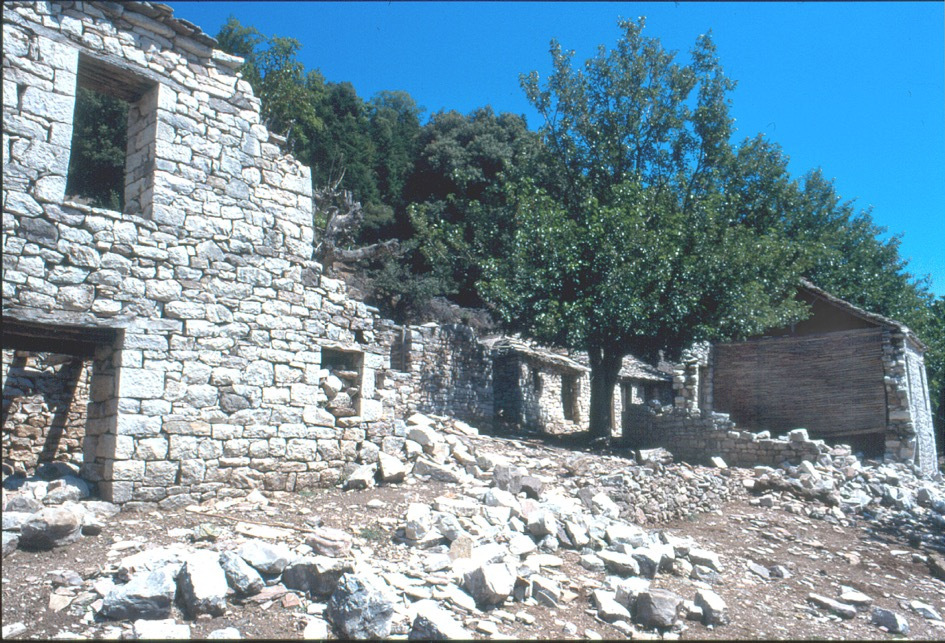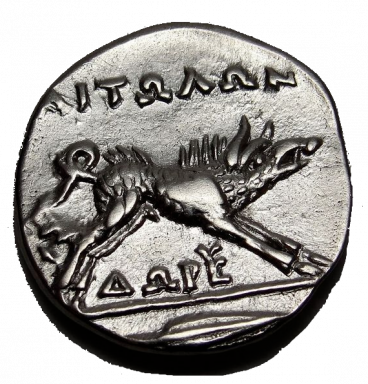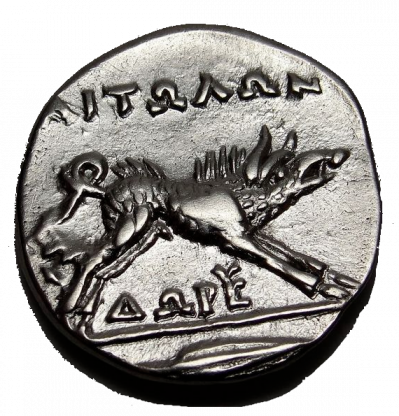Under Construction
Aetolian studies project
Brief history of the project
In Antiquity the Aetolians were a Greek people (ethnos) living in the southern offshoots of the Pindus Mountains. Their territory, ‘Aetolia’, was for the greater part rugged and inhospitable, with peaks rising well over 2000 meters. Although the Aetolians were mentioned by Homer among the Greeks who sailed against Troy, the ethnos was considered in the Classical Era to be loosely organised and only partly-Hellenised. However, in Hellenistic times the Aetolians expanded from their mountain territory to become the dominating state in the Delphian Amphictyony and the main power of Central Greece. But their hey-day was short-lived: in the second century B.C. the Aetolians were crushed by the Romans, and their ethnos-state collapsed. Aetolia has been a marginal region ever since. The rise and fall of the Aetolians presents an historical problem on which there exists only a limited understanding, mostly because Aetolia long remained archaeological terra incognita. Dutch research has set out to improve that situation.
Introduction: in search of a Greek mountain region
The Aetolia Survey, which took place under auspices of the Netherlands Institute in Athens, is part of the multidisciplinary Aetolian Studies Project, which aims at shedding light on the history and genre de vie of this Greek mountain region from prehistoric times until the modern period. The area under study, ‘Aetolia’, is named after the ancient Greek ethnos (people) of the Aetolians, who are mentioned as inhabitants of this landscape from the Iliad onward (ca. 8th-7th centuries BC) until Roman times. During the Hellenistic era (late fourth to early second century BC) they suddenly and shortly rose to political and military prominence in Central Greece.
The Aetolians are counted among the typical Greek ethnos-states. They emerged as a territorial organisation without any degree of urbanization in the fringes of the Aegean civilisation. During the classical era the ethnos was considered to be a backward, loosely organised, only partly Hellenised mountain people, which lived ‘not in poleis, but in villages’, which were, as Thucydides (3.94.4) noted, ‘wide apart’. In the Hellenistic age, however, the Aetolians expanded from their mountain territory, and by the end of the third century BC they controlled the Delphian Amphictyony and ruled over a territory which extended from the Ionian Sea in the west to the Malian Gulf in the east. By this time they were the main power in mainland Greece opposite the Macedonians in the north.
In fact the Aetolians were ultimately considered by the Romans to be their main foe on Greek lands, and when the two powers clashed in the early second century BC, the Aetolians met total defeat. After their leaders were massacred in 167 BC they were forced by the Romans to abandon their mountain territory and resettle in the easy to control new coastal settlement of Nicopolis in western Acarnania. The landscape Aetolia slipped back into its marginal position, only to be heard again from during the Greek War of Independence and during the Second World War, when its quality as an impenetrable natural fortress proved its worth again.
Aim of the Aetolian Studies Project
The aim of the Aetolian Studies Project is to reveal and explain the long-term patterns of settlement and history of habitation in Aetolia from prehistoric times until the end of the pre-modern period (ca. 1950). Within this overall aim attention is focussed particularly on the explanation of the short but spectacular punctuation in Hellenistic times of the marginal longue durée of this mountain region.
The research region of the Aetolia Project is a triangular shaped mountain landscape of ca. 5500 square kilometres which more or less covers the territory of the ancient ethnos of the Aetolians in early Hellenistic times. Apart from the coastal strip and the lower-lying parts in the south-west around Lake Trichonis, the area consists mainly of the southernmost ranges of the Pindos Mountains and thus has mostly very rugged and sometimes quite impenetrable terrain to offer, with steep slopes, deep ravines and narrow valleys.
The research region covers substantial parts of three modern Greek provinces: it includes in the east the modern eparchy of Doris (Nomos Fokidos), the eparchies of Navpaktia, Mesolongion and Trikhonis (Nomos Aetoloakarnanias) in the centre and west, as well as the southern half of the Nomos Evrytanias in the north.
The fieldwork
Dutch research in Aetolia started in 1976 with the survey of a large fortified site in the East Aetolian mountains, now generally identified as Kallion or Kallipolis, under the direction of S.C. Bakhuizen. In the 1980's it grew into an extensive multidisciplinary project in which site survey, regional prospection, pottery sampling, historical research, computer analysis of census data, digitalization of topographical maps as well as social-geographical field study go hand in hand.
Interdisciplinary Project on the Habitation History of a Greek Region






